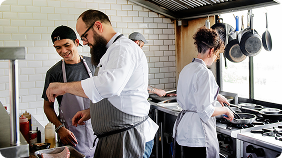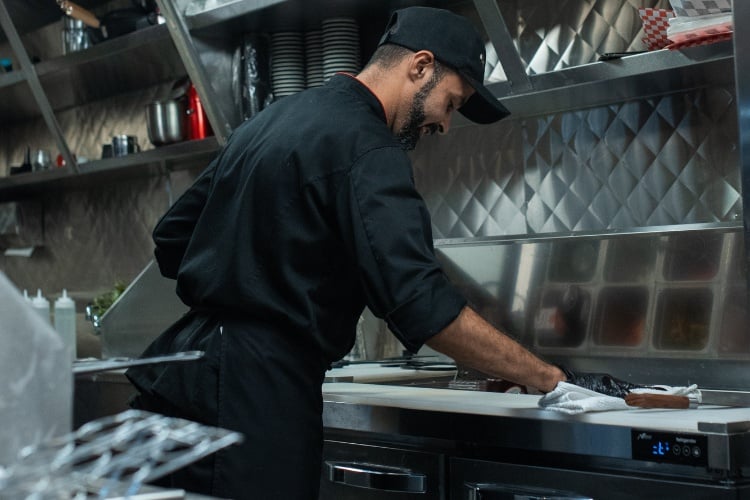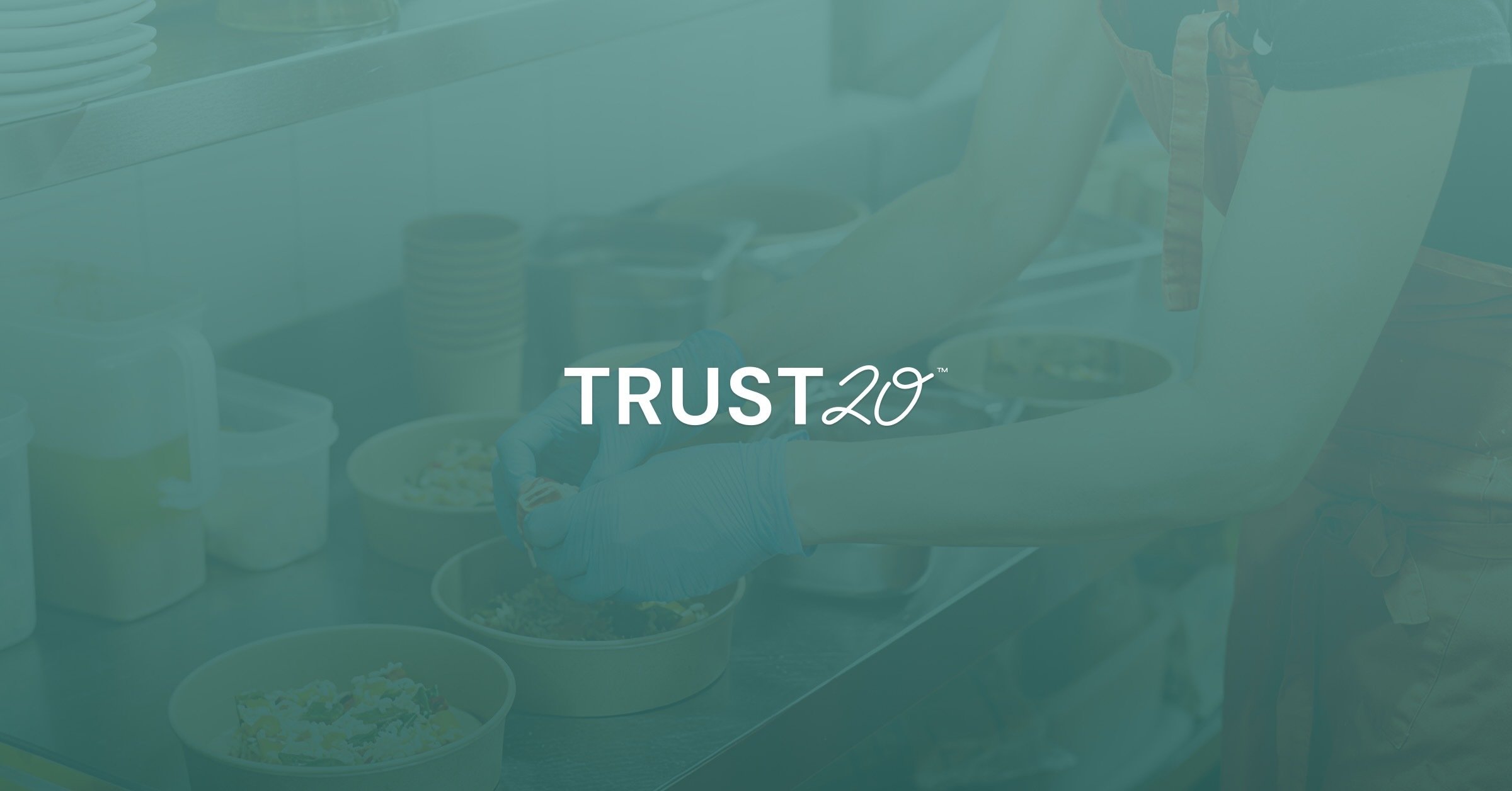Cross-contamination is the physical transfer of harmful pathogens from food, equipment, or people to food–and it is one of the primary ways food becomes unsafe. Cross-contamination can happen anytime, anywhere and it can rapidly create a dangerous food environment.
Thankfully, cross-contamination is easily preventable with just a little bit of help from each member of a foodservice team. Following the simple guidelines below can make a big impact when it comes to preventing cross contamination. They include:
Properly wash hands early and often
Use separate equipment for each kind of food
Prepare different types of food at different times
Follow storage and product placement best practices
Fridge organization cheat sheet
Properly wash hands early and often
Hopefully handwashing is already a habit among everyone on staff at your foodservice establishment. It is a key line of defense when it comes to protecting food from cross-contamination. It can prevent the transfer of bacteria between foods as well as viruses from people to food. We know a business can’t rely solely on hope when it comes to preventing cross-contamination, so we encourage restaurants, bars, schools, nursing homes, and beyond to regularly hold food safety training “stand-ups” to remind staff about critical food safety practices–including the guidelines for where, when, and how to wash your hands properly.
Use separate equipment for each kind of food
This means the cutting boards, utensils, and containers used to prepare and store raw poultry, raw meat, and produce should all be different. Some food establishments create a color code system to make it easy to know which foods should be prepared with which equipment. Separation of equipment is a key practice since rinsing a food contact surface is not enough to make it safe, especially after working with raw products. While it is a good practice to clean and sanitize work areas and equipment between tasks, it is easy to miss spots if you’re in a hurry. Even when using separate equipment, it should still be cleaned and sanitized every four hours during continuous use and after its final use of the day.
Prepare different types of food at different times
Kitchen chaos and limited space can mean the same food contact surfaces have to be used to prepare different foods. In this scenario, the back of house team should create a schedule in order to prepare “ready to eat” foods before raw products. When planning a food prep schedule, staff should also plan to allot time for cleaning AND sanitizing food contact surfaces between each product being prepared. Dahlia Snaiderman from Toast’s On the Line points out cleanliness is far more important than speed–even if some folks are loathe to admit it. We say better safe and slow(er) than sorry!1
Follow storage and product placement best practices
The guidelines for safe food storage are straightforward. First and foremost, ensure food is stored in containers meant for food and they are always sealed, leak-proof, and covered. Not only will this help prevent cross-contamination, but it will support pest control efforts.
It is common sense that food items should never be stored on the floor or anywhere near chemicals, but is there a method to the madness of cooler organization and proper refrigeration of TCS foods?2 There is! Following a top-to-bottom layout where foods requiring higher cooking temperatures are always stored below other products in the fridge.
Fridge organization cheat sheet
Knowing where to place different types of foods in the refrigerator is key to preventing cross-contamination. Here's a quick breakdown:
|
Where |
What Food Items |
|
Top Shelf |
Ready-to-Eat Prepared Foods, Condiments, Pickled Products, Fruits |
|
Shelf Below |
Seafood |
|
Next Shelf |
Whole Cuts of Beef and Pork, Eggs that will be Served Immediately |
|
Second from the Bottom Shelf |
Ground, Injected, Marinated, or Tenderized Meat and Fish, Eggs that will be Hot Held |
|
Bottom Shelf |
Whole and Ground Poultry |
And remember, if meat, poultry, or fish have been removed from the freezer to thaw in the fridge, place them below all else to avoid the risk of any juices dripping onto food underneath it.
The Takeaway
These are just a few of the simple practices that can go a long way in preventing cross-contamination and, in turn, protecting people from foodborne illnesses. Have you seen other strategies implemented in your workplace that help prevent cross-contamination? We want to know! Contact us on Instagram, Facebook, or Twitter with your tips today.
Sources:






.png)

.png)
